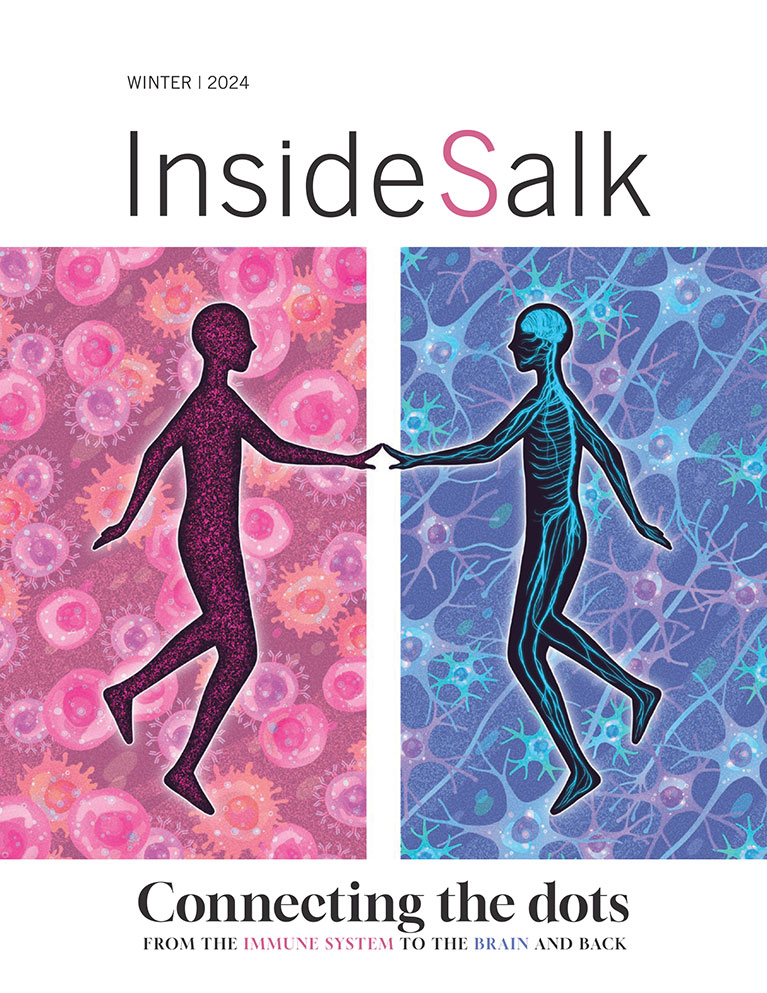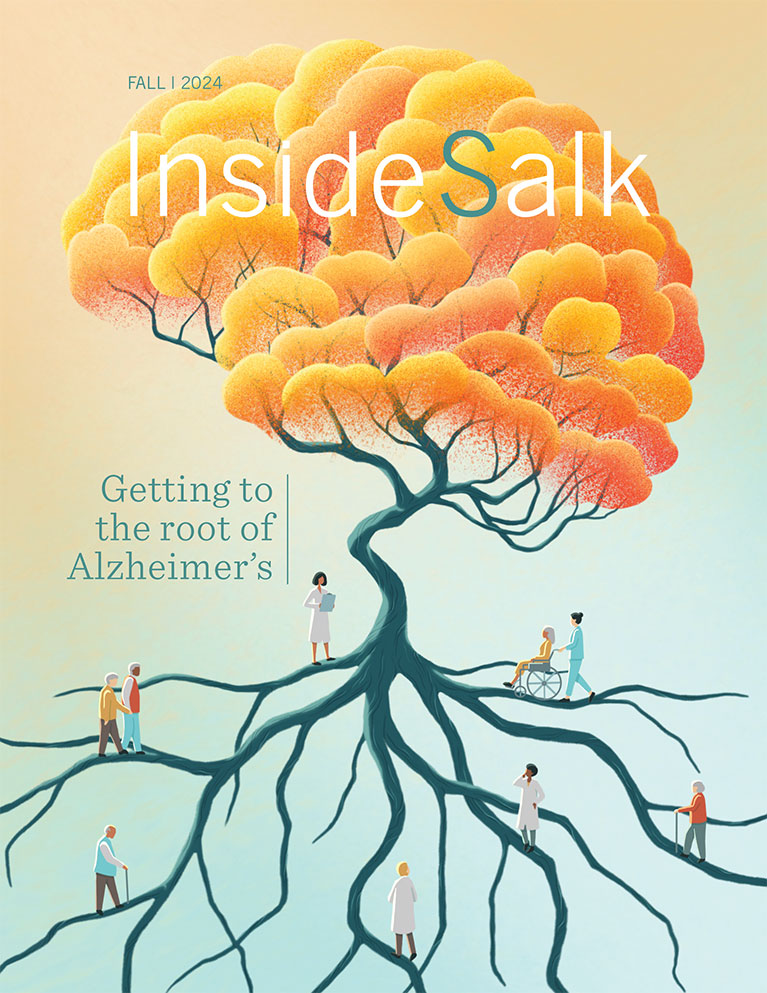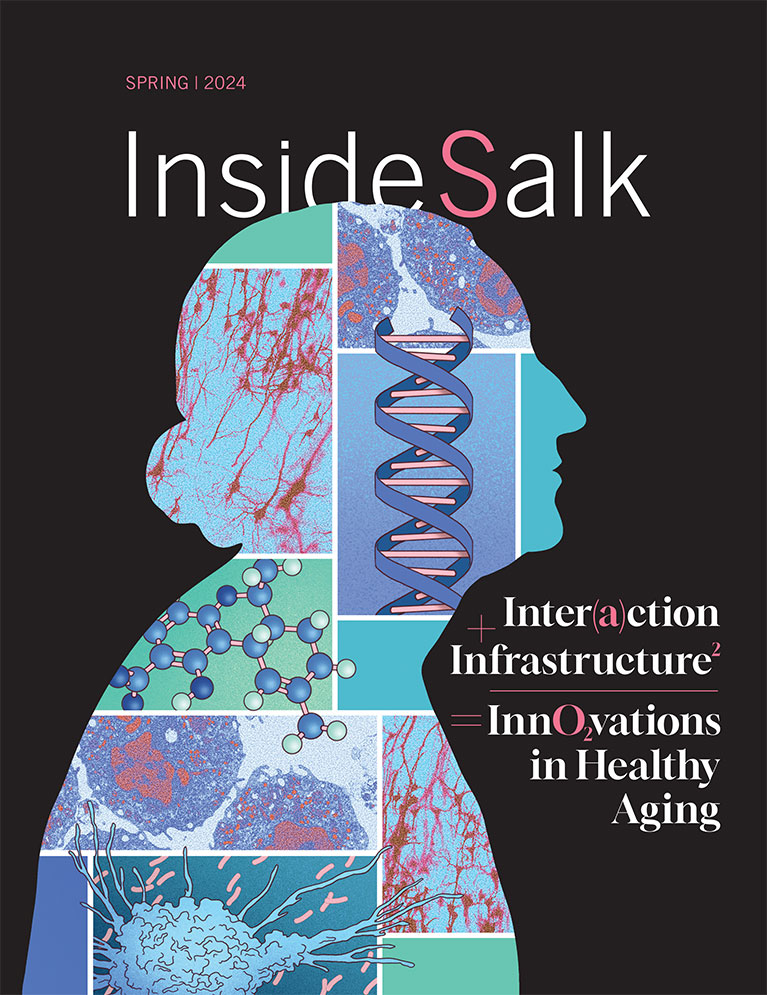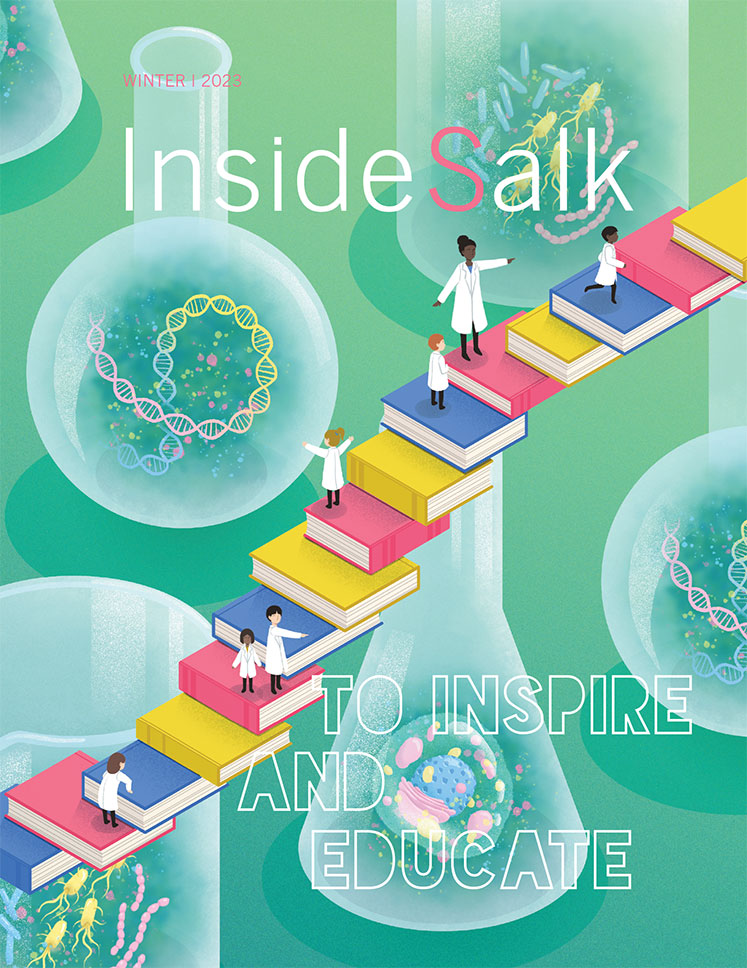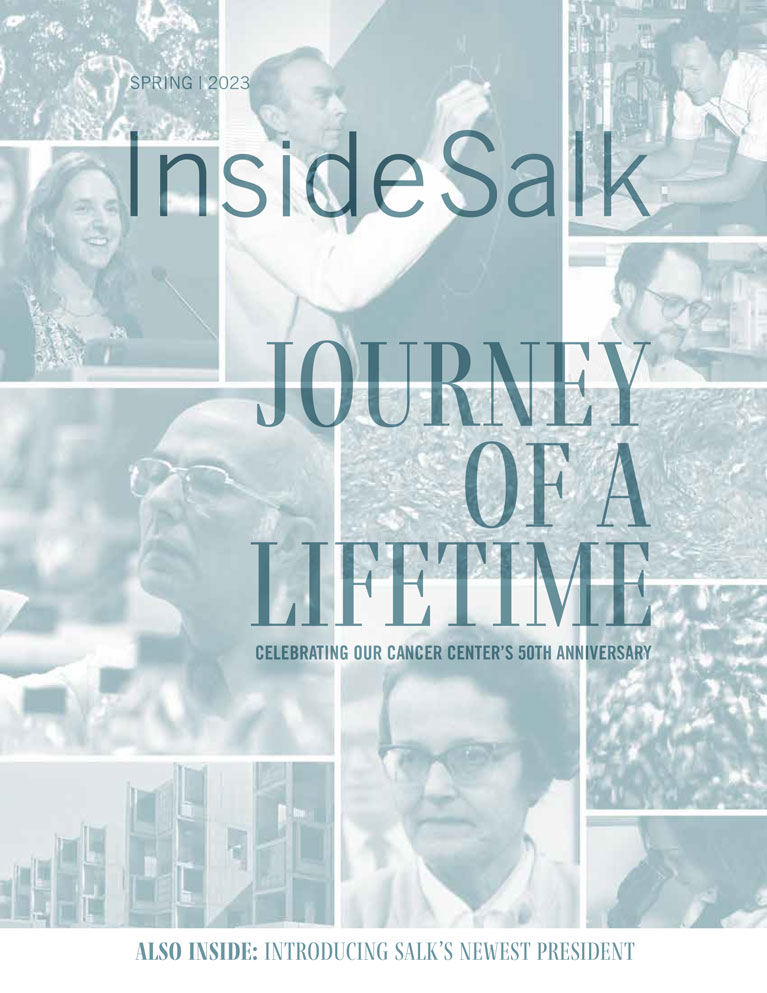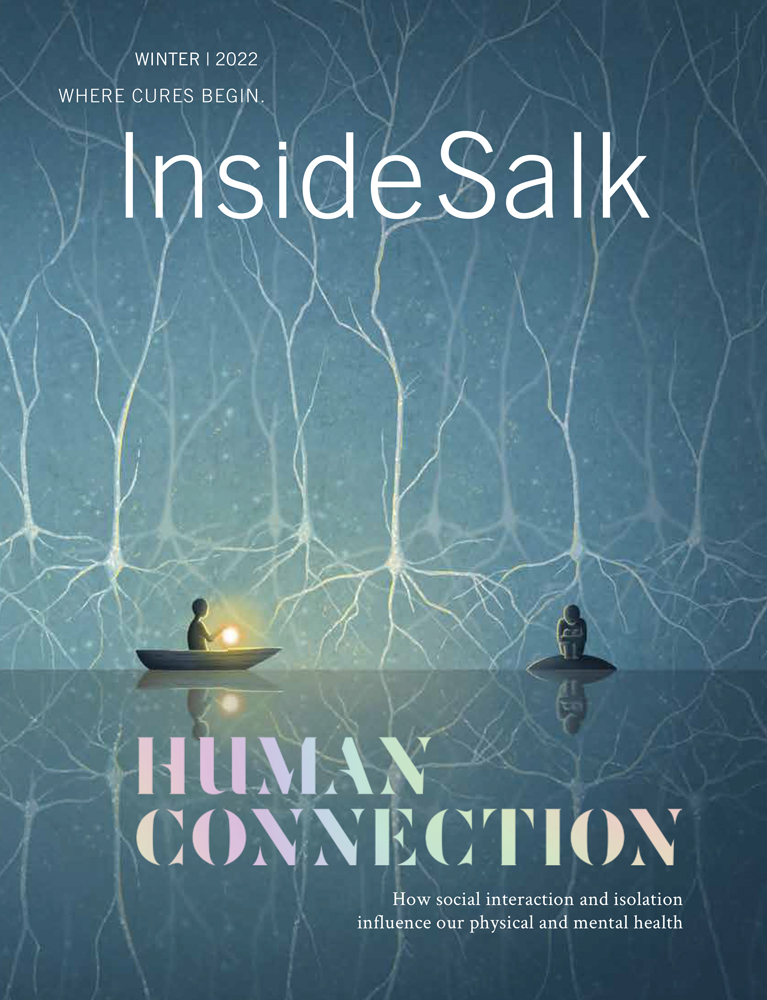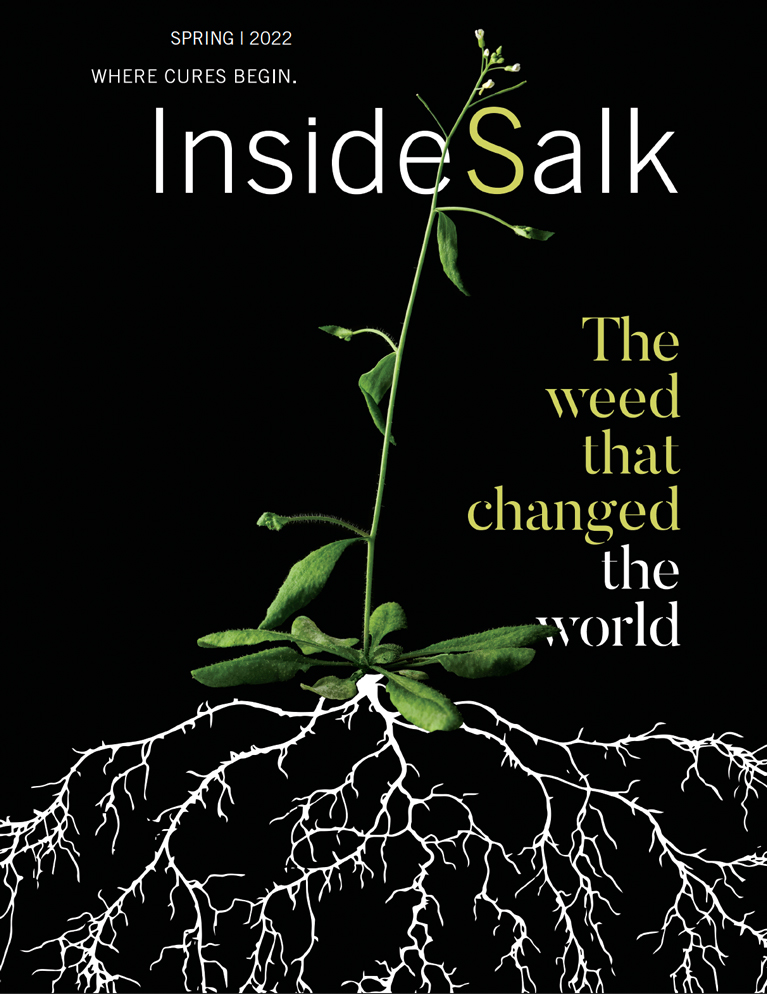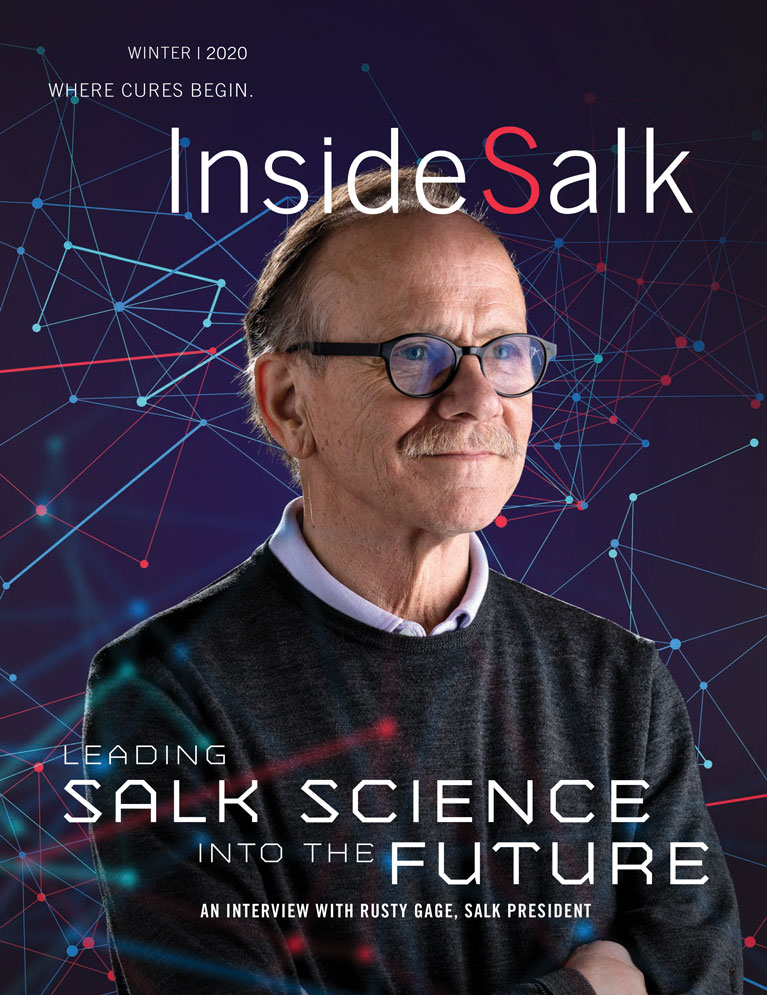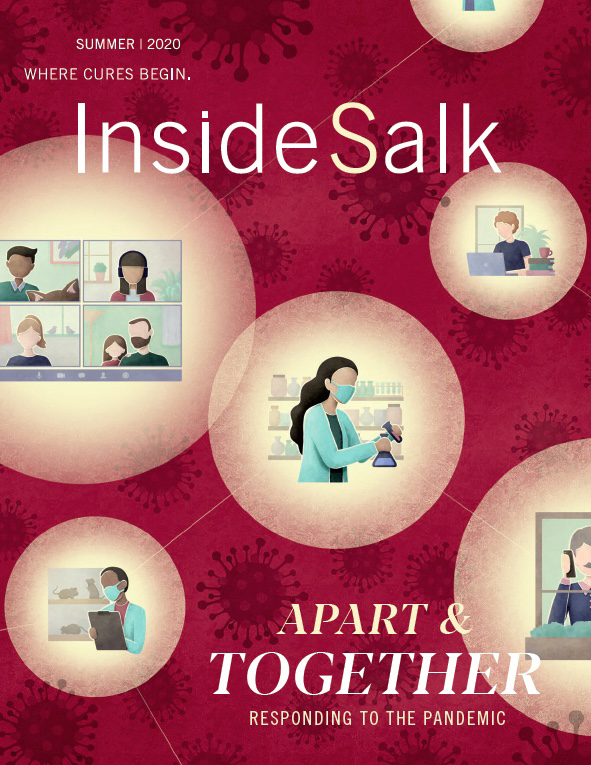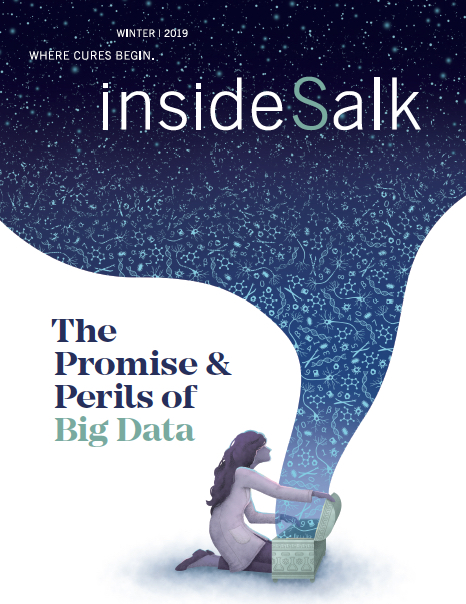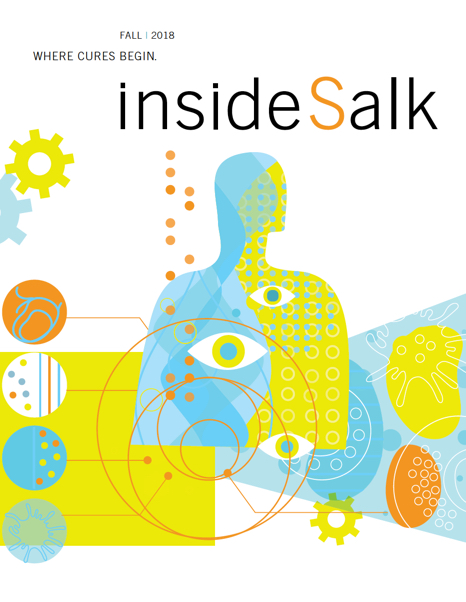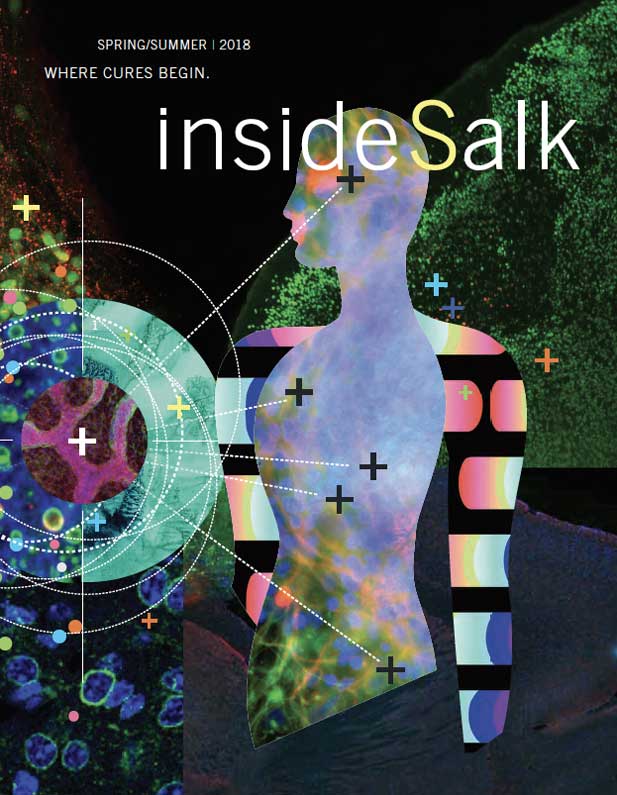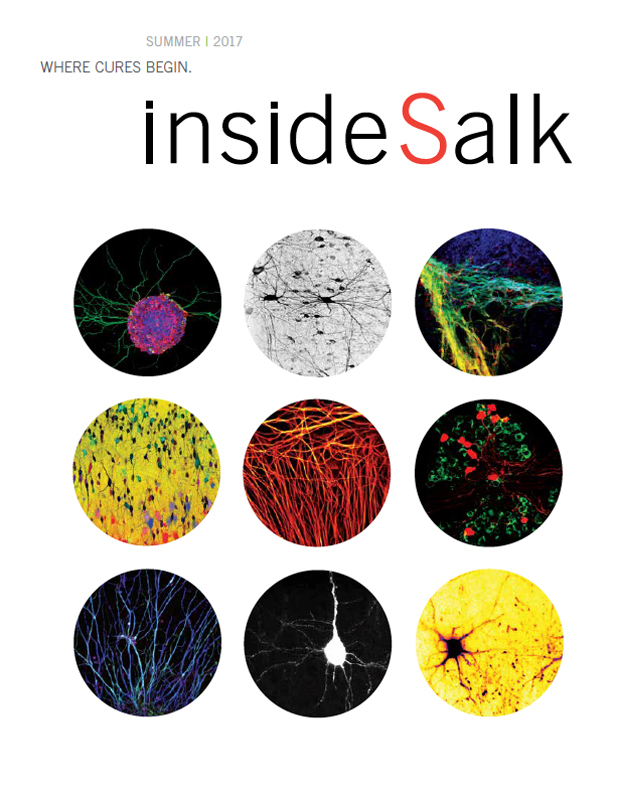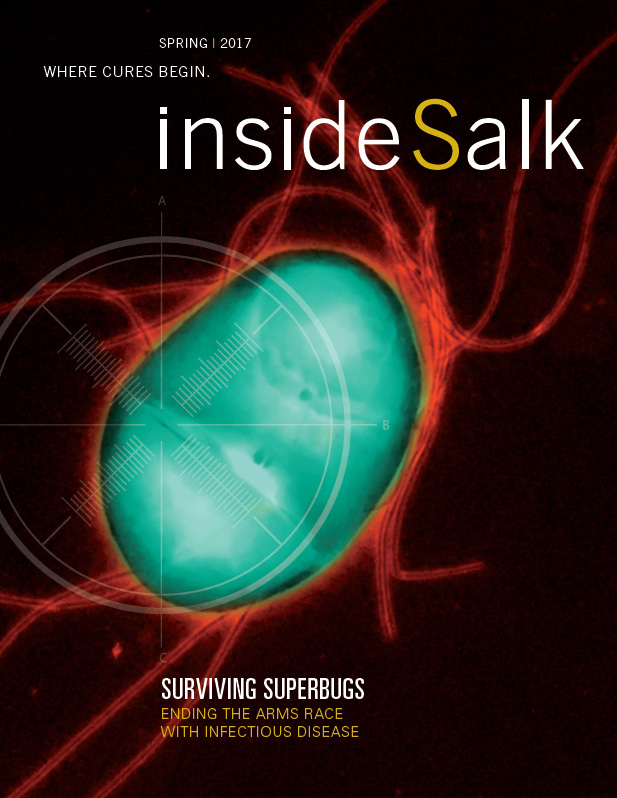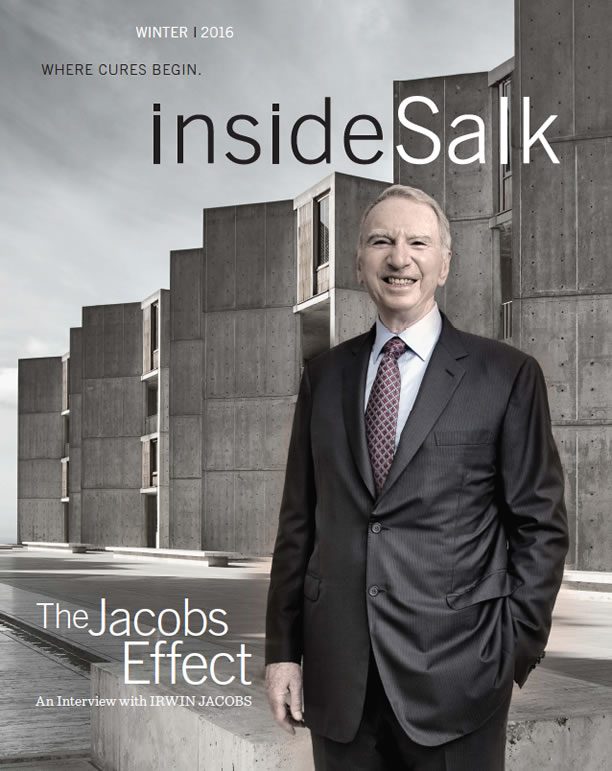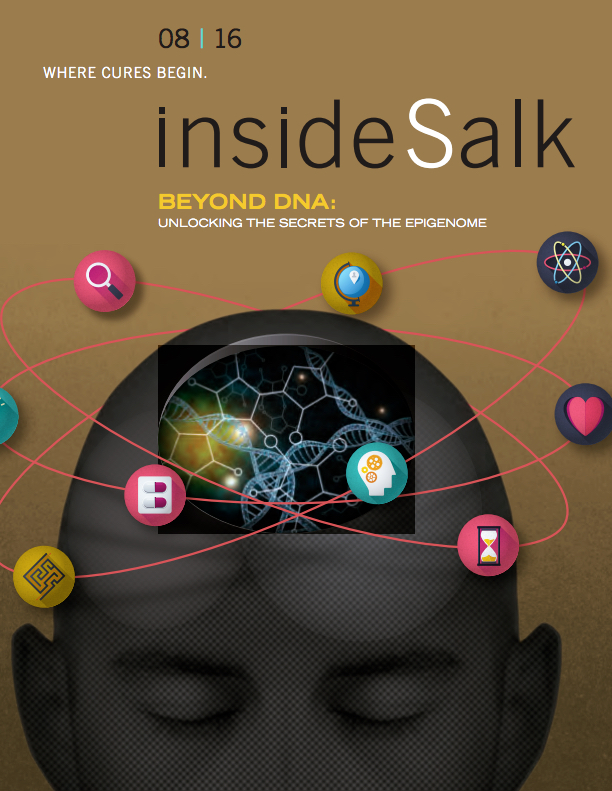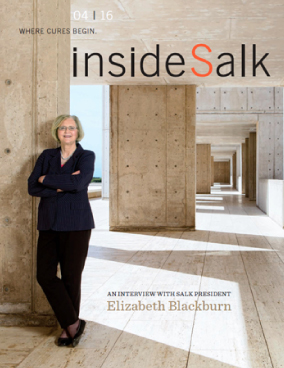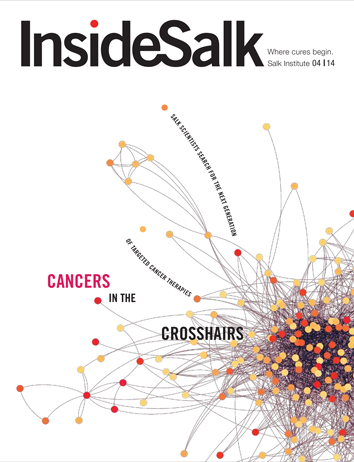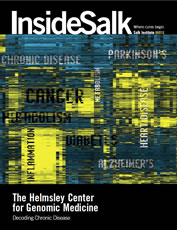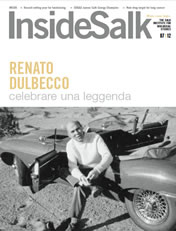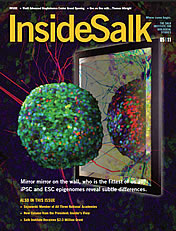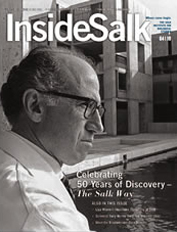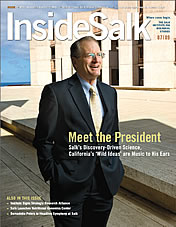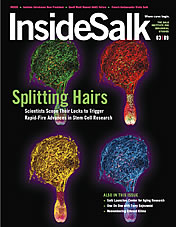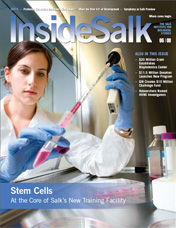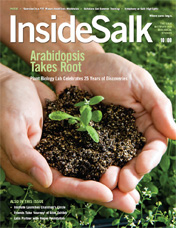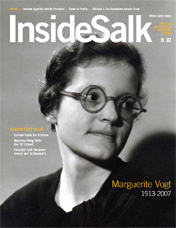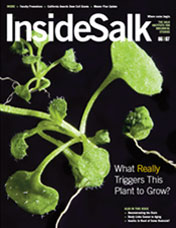Next Gen Irene López Gutiérrez After every storm comes sunshine—and science
It was winter in Irene López Gutiérrez’s seaside hometown in northern Spain, and yet another storm was pouring rain over the houses and streets, trapping everyone inside. With little else to do, 11-year-old Gutiérrez sat in front of the television, searching for something interesting to watch. Then, it happened.
“I found this Spanish science show where they interviewed researchers from all disciplines—biologists, physicists, mathematicians,” says Gutiérrez. “After that, I was really into scientists.”
She may have been stuck indoors, but her mind was now traveling through nature, space, and time. When the storm clouds passed, Gutiérrez was still buzzing with curiosity.
Teachers nurtured her interest in science in the years that followed. Gutiérrez loved to learn, so she didn’t narrow her sights onto any one field just yet.
Then, another dark cloud cast its shadow over her family: Her grandfather was diagnosed with a brain tumor.
“I spent a lot of afternoons watching him in his house because it’s a very tough disease,” says Gutiérrez. “Suddenly my grandfather couldn’t see, couldn’t hear, couldn’t move, couldn’t speak. I was losing him.”
Gutiérrez helped care for her grandfather as he gradually lost his faculties and entered a vegetative state. Doctors warned he would only survive a few months longer. Instead, the family watched him live another three years.
“I remember my mother and uncles asking the doctors, ‘Can he hear us? Does he know we’re here?’” Gutiérrez recalls. “That’s when I realized how amazing and important the brain is, and I decided that I would study biology when I went to university.”
Gutiérrez was the first in her family to attend university. She specialized in biochemistry, looking to understand life at a molecular level. When it was time to join a lab, she decided on a neuroscience lab that studied Alzheimer’s disease.
“I realized that I loved research,” she says, “and I loved research in neuroscience.”
After earning her bachelor’s, Gutiérrez moved on to master’s and doctoral degrees. She spent six years studying Alzheimer’s at the Universidad Complutense de Madrid, supplementing her training with prestigious internships in Texas, Germany, and Belgium. She was never one to be confined, and her research soon expanded beyond the boundaries of neuroscience. She realized she was ready for a big move—a new place, with new perspectives.
That place was Professor Susan Kaech’s lab at Salk, where she now works as a postdoctoral researcher exploring the new frontier of neuroimmunology.
“Working with immunology experts in Sue’s multidisciplinary lab has been immensely helpful,” she explains. “Alzheimer’s disease is not just something going on with your neurons—your immune system is also perturbed. But scientists are often trained to be very focused, very specialized. We need to step out of that to see the big picture and full complexity of the disease.”
Gutiérrez is working to see that big picture using a new human research model of Alzheimer’s disease.
“Alzheimer’s disease is not just something going on with your neurons—your immune system is also perturbed. But scientists are often trained to be very focused, very specialized. We need to step out of that to see the big picture and full complexity of
the disease.”–Irene López Gutiérrez
“I used mouse models throughout my doctoral studies, so the human model is what really excites me now.”
Working in collaboration with Salk Professor Rusty Gage’s lab, Gutiérrez uses miniature models of the human brain, called organoids, to explore the differences between healthy brains and those with Alzheimer’s disease. The team recently succeeded in adding immune cells to these organoid models, allowing them to observe how human brain and immune cells interact.
“For many years, we thought that the peripheral immune system couldn’t enter the brain, since the brain has its own specialized immune cells,” says Gutiérrez. “Now we realize there’s a lot of communication happening between the immune system and our brain cells that we don’t yet understand.”
The researchers are now working to add larger functional immune systems to their brain organoids. Once these models are up and running, Gutiérrez has plenty of questions she’d like to answer.
“We get sick with infectious diseases throughout our lives. We know that can alter our immune system, but how might it also contribute to brain disease?” asks Gutiérrez. “We already have evidence that there’s some accumulation of specific proteins in the brains of mice and humans with Alzheimer’s disease. I want to find out what immune cells are doing there.”
By looking at the brain through the lens of immunology, Gutiérrez and her colleagues are helping us understand neurodegeneration in a whole new way.
“Being a part of this neuroimmunology movement is very, very exciting,” she says. “There’s so much knowledge just over the horizon, and I cannot wait to get there.”
Irene Lopéz Gutiérrez advocates for interdisciplinary Alzheimer’s research
Hear more on how Irene is searching for answers about Alzheimer’s disease in the exciting new field of neuroimmunology.
Featured Stories
 Seeds of change: The Harnessing Plants Initiative is scaling a new kind of crop that could save the future of farming—and the planetFarmers and plant biologists are linking arms to build more sustainable, resilient agriculture. Salk scientists are working to enhance plants' natural ability to capture carbon to clean our air and restore environmental stability—all while maintaining productivity for growers.
Seeds of change: The Harnessing Plants Initiative is scaling a new kind of crop that could save the future of farming—and the planetFarmers and plant biologists are linking arms to build more sustainable, resilient agriculture. Salk scientists are working to enhance plants' natural ability to capture carbon to clean our air and restore environmental stability—all while maintaining productivity for growers.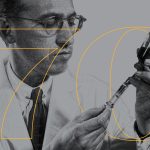 The day polio met its match: Celebrating 70 years of the Salk vaccineSeventy years ago, on April 12, 1955, the polio vaccine developed by Jonas Salk and his colleagues was officially declared “safe, effective, and potent”—a moment heralded as a triumph of medicine over one of the most feared diseases of the 20th century. On this milestone anniversary, it's crucial to remember that fear, and learn from this historic public health success.
The day polio met its match: Celebrating 70 years of the Salk vaccineSeventy years ago, on April 12, 1955, the polio vaccine developed by Jonas Salk and his colleagues was officially declared “safe, effective, and potent”—a moment heralded as a triumph of medicine over one of the most feared diseases of the 20th century. On this milestone anniversary, it's crucial to remember that fear, and learn from this historic public health success. Pallav Kosuri: Making magic out of moleculesA physicist-turned-bioengineer, Kosuri is developing nanoscale technologies that are on their way to transforming how we diagnose and treat diseases. Kosuri’s lab is using DNA to create a suite of biosensors, diagnostic tools, and drug delivery systems.
Pallav Kosuri: Making magic out of moleculesA physicist-turned-bioengineer, Kosuri is developing nanoscale technologies that are on their way to transforming how we diagnose and treat diseases. Kosuri’s lab is using DNA to create a suite of biosensors, diagnostic tools, and drug delivery systems. Suzanne Page: Uprooting, replanting, and blooming againIn October 2024, the Salk Institute named Suzanne Page as its new Vice President and Chief Operating Officer. Page has lived and traveled all over the country, developing a strong background in research operations, finance, and legal in the for-profit and nonprofit sectors—leading her to "manifest" her role at Salk.
Suzanne Page: Uprooting, replanting, and blooming againIn October 2024, the Salk Institute named Suzanne Page as its new Vice President and Chief Operating Officer. Page has lived and traveled all over the country, developing a strong background in research operations, finance, and legal in the for-profit and nonprofit sectors—leading her to "manifest" her role at Salk.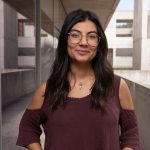 Irene López Gutiérrez: After every storm comes sunshine—and scienceRainy winter weather in Gutiérrez's seaside hometown in Spain led to long days indoors, where she found a science television show that inspired an entire life of education and research that eventually brought her to Salk. Today, she works in Professor Susan Kaech's lab studying Alzheimer's disease.
Irene López Gutiérrez: After every storm comes sunshine—and scienceRainy winter weather in Gutiérrez's seaside hometown in Spain led to long days indoors, where she found a science television show that inspired an entire life of education and research that eventually brought her to Salk. Today, she works in Professor Susan Kaech's lab studying Alzheimer's disease. Michelle Chamberlain named Salk’s new Vice President of External RelationsMichelle Chamberlain assumed the role on April 2, where she will serve on Salk's Executive Leadership Team and oversee all fundraising efforts, communications, community engagement, education outreach programs, foundation relations, and stewardship activities.
Michelle Chamberlain named Salk’s new Vice President of External RelationsMichelle Chamberlain assumed the role on April 2, where she will serve on Salk's Executive Leadership Team and oversee all fundraising efforts, communications, community engagement, education outreach programs, foundation relations, and stewardship activities. Trustee Richard A. Heyman donates $4.5 million to enable early-stage innovative researchRichard A. Heyman, a member of the Salk Institute’s Board of Trustees, and his wife, Anne Daigle, have donated $4.5 million to establish the new Richard A. Heyman Collaborative Innovation Fund to support Institute faculty on collaborative, early-stage studies aimed at big, bold questions.
Trustee Richard A. Heyman donates $4.5 million to enable early-stage innovative researchRichard A. Heyman, a member of the Salk Institute’s Board of Trustees, and his wife, Anne Daigle, have donated $4.5 million to establish the new Richard A. Heyman Collaborative Innovation Fund to support Institute faculty on collaborative, early-stage studies aimed at big, bold questions. 50 years of discovery: Professor Tony Hunter’s half-century legacy at SalkTony Hunter first arrived at the Salk Institute in 1971 as a postdoctoral trainee from the University of Cambridge. Four years later, he officially joined the Institute as an assistant professor and cancer biology pioneer.
50 years of discovery: Professor Tony Hunter’s half-century legacy at SalkTony Hunter first arrived at the Salk Institute in 1971 as a postdoctoral trainee from the University of Cambridge. Four years later, he officially joined the Institute as an assistant professor and cancer biology pioneer.


